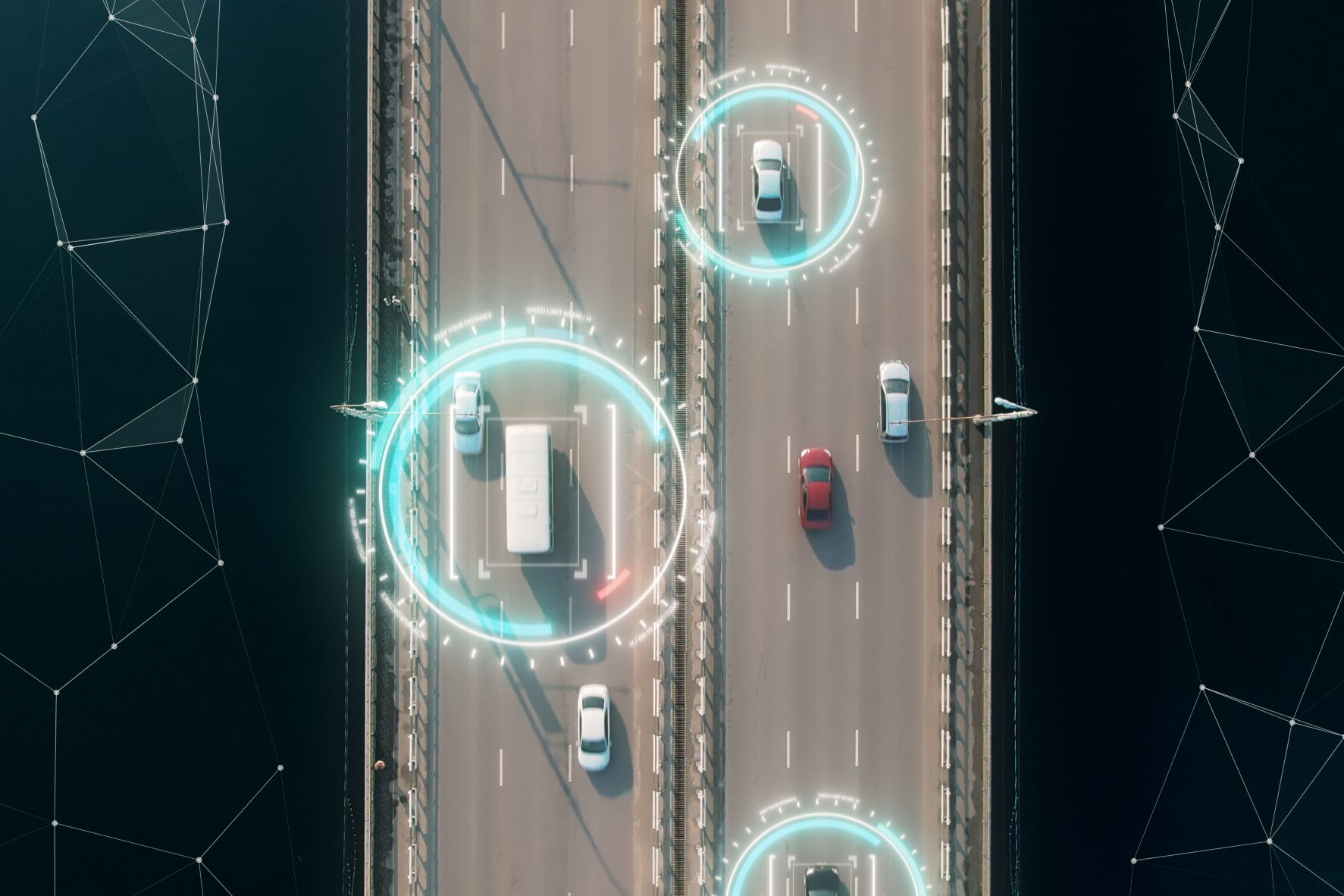What is fleet tracking and how does it work?
Fleet tracking is the use of location technology in tracked vehicles. Software programs that gather data from the vehicle location devices enable you to pinpoint the vehicle’s exact location. A well-known and good example of the most common vehicle tracking system would be GPS.
Traditional fleet tracking has its pros and cons. Whether a small supplier or a global logistics provider, fleet managers often lack detailed insight into the performance and utilization of their fleet. Due to inaccurate monitoring data, for example, travel hours do not correspond to usage and are often not billed correctly. In addition, there are regularly higher costs for fuel and maintenance due to private vehicle use or damage.
Such issues can easily be avoided with digitally networked tracking solutions, whereby the fleet manager always has a precise overview of all vehicles. Today, cloud-based platforms are able to provide real-time data about the location, movement, and travel time of the fleet.
The proof – intelligent fleet tracking in practice
One best practice scenario of fleet tracking is Drive & Track – a well-known scenario in the world of IoT connectivity. In practice, the handy devices can be easily installed in any vehicle. You can even get started right away with the Plug & Play Tracker Dongle. With no assembly required, it is simply plugged into the existing OBD2 interface and is ready for immediate use.
The trackers record vehicle condition, battery voltage and engine data and send this information to a cloud platform. Via a web portal, logisticians can access detailed analysis reports, for example, on speeding, acceleration, and braking behavior. The evaluations not only provide information about risk-taking driving behavior but also drivers who use their company car privately. Downtimes due to defective vehicles can be minimized because the logistics providers recognize in good time when maintenance is due. Based on vehicle position and utilization data, fleet managers can optimize routes, optimally use drivers and vehicles, and inform customers precisely about delivery times.
The data transmission takes place over the cellular network. Drive & Track optimizes the operational processes in fleet management, lowers the costs of running a fleet and increases the performance of company fleets.
Another best practice example is "Geotab"- a plug-and-play solution with focus on the connectivity aspect. The solution enables fleet tracking and management in real time. Customers can have a variety of information about their vehicle sent to them via practical information messages or view the activities and trips of individual drivers. Vehicle diagnosis is also possible and allows precise information about the condition of the engine, for example in the event of problems or error messages. In addition, extensions such as navigation devices, NFC Driver ID Key, sensors and much more can be connected.
Fleet tracking success factor - what makes it so successful?
Use cases have numerous advantages and massive potential. However, there are certain key features for fleet operators that are the main reason for adding wireless technology to the fleet. Ultimately, the results from the IoT-enabled solutions are reflected in the best possible ROI.
- Robust Connectivity
The issue of connectivity is arguably the most influential and crucial. Hardly any application scenario is as volatile and dynamic as fleet tracking. The connected vehicles are in constant motion and therefore change their location every second. High connectivity must be guaranteed in order to always remain connected to other objects in the IoT. emnify provides cellular IoT connectivity for use cases just like this. To learn more and to hear directly from our customers, read our success stories.
- Scalability
On the one hand, there are fleets with only a handful of vehicles. On the other hand, there are also gigantic fleets with several thousand vehicles and fixed assets that reach into the billions. The size of a fleet is always subject to dynamic changes. It is therefore important to react adequately to such changes with the appropriate scalability. With appropriate functionalities, increasing or decreasing sizes can be dynamically and intuitively adjusted in their connectivity.
- Increased efficiency
The use of IoT enables seamless multi-platform collaboration and paves the way for more efficiency and productivity for companies in the transport, logistics and fleet management sectors. For example, driver downtime and timeouts lead to enormous costs. In the United States, large logistics companies lose up to $ 515,000 per minute for each driver due to idle times. Avoidable delays in route guidance and loading can also have a significant impact on margins.
- Intelligent maintenance and streamlining of processes
Thanks to networked telematics, technical accidents can be prevented in many cases. The system can continuously record the status of the vehicle. Your fleet management can keep an eye on when the next oil change is due, when the tires should be replaced and other maintenance measures. In this way, serious consequential damage to the vehicle can be avoided, which can save the company transportation losses and costs.
With the help of so-called predictive maintenance procedures, which are already a fixed term in industrial production plants, possible vehicle failures can be avoided - saving breakdown costs and increasing driver safety.
The complete documentation of all operations and vehicle data is a central task in fleet management – whether it is about transport and leasing providers or the management of company vehicles in the field sales force. The catchphrase here is “connected cars”, but it does not only refer to classic cars. The most important thing is that all relevant data is recorded automatically and in real time.
- Greater security
With regard to the growing traffic performance in Germany, the use of IoT-based fleet tracking is an enormous advance for road safety. In addition, you give your company a competitive advantage if, thanks to automatic data acquisition, you not only save operating costs and time, but can also execute your customers' orders in a fail-safe manner and protect your employees on the go. At the same time, the location function in the event of vandalism and theft offers additional advantages in the worst case. Overall, the solution enables fleet operators to cut costs by up to 20 percent.
Alongside this, information about the driving style and handling of the car is recorded. This can help persuade users to use the vehicle responsibly. Both providers of leasing and rental vehicles, as well as companies that make company cars available to their employees, benefit from this. The result is usually less signs of wear and a lower risk of accidents.
Conclusion
The bottom line is that the combination of IoT and 5G technology in fleet tracking and management brings enormous advantages – both for companies and for employees. The fundamental success enabler remains strong, reliable and consistent connectivity. Application scenarios like those presented here only work if the connectivity is guaranteed accordingly. That said, the other success factors such as scalability are also extremely important. The size of a fleet is always volatile and, in extreme cases, changes daily. Even with such change patterns, vehicles must be easily integrated or excluded in an IoT solution. The practical examples are living proof that fleet tracking works. Since only a few companies currently have active and digital fleet management, the potential is all the higher. As soon as more companies dare to tackle the topic, new use cases and new ideas are born. The potential is already clear today, especially in terms of safety, efficiency and scalability.
Are you in a fleet tracking business and curious about what cellular IoT connectivity could do for your IoT solution? Chat to one of our experts today to begin future-proofing your business.
Get in touch with our IoT experts
Discover how emnify can help you grow your business and talk to one of our IoT consultants today!

Alastair Longmuir
Alastair is a Customer Success Manager at emnify. He joined our team in 2022 and looks after English-speaking customers across EMEA and APAC.



